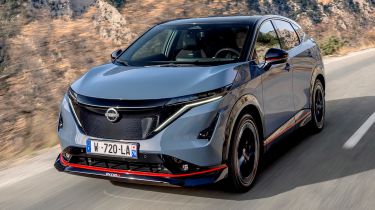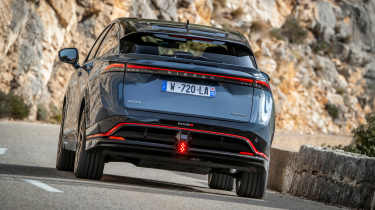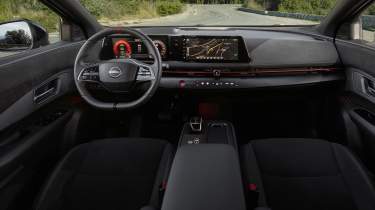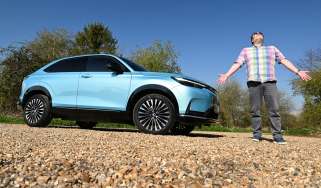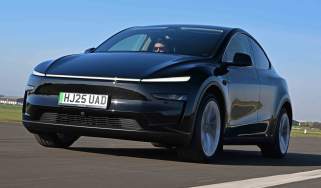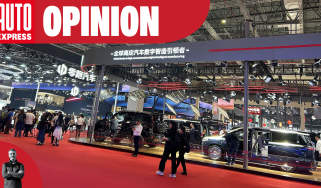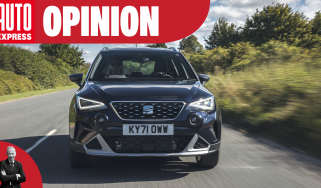New Nissan Ariya Nismo 2025 review: hot electric SUV lacks some bite
Applying a legendary Japanese performance brand name to the Nissan Ariya electric SUV is a bold move, but it works – to a certain degree, at least

Verdict
Sharp looks and competitive pricing plus a well equipped and spacious cabin make the Nissan Ariya Nismo hard to ignore on paper. It drives well enough, too, even if lacks sparkle beside the headline rivals in this class. But a fidgety ride, poor range and relatively long charge times separate it from greatness, even though it’s certainly a welcome addition at the top of an already strong range of electric SUVs.
We rate the Nissan Ariya at Auto Express. It’s a strong electric SUV that offers space, style, quality and value in equal measure, and it’s an engaging car to drive, too. So much so, that we voted it our outright Car Of The Year in 2022.
Presumably, then, a Nismo version with more performance, plus sharper handling and looks, should be peachy, shouldn’t it? The answer is yes, and no.
Yes, because the Nismo Ariya does indeed look tastier and goes harder than the standard car thanks to its potent twin electric motors. Although its 87kWh battery is unchanged, power rises to 429bhp from 302bhp, dropping the 0-62mph time to 5.0 seconds (from 5.7sec). Torque is unchanged at 600Nm.
No, because compared with rivals such as the Hyundai Ioniq 5 N, Kia’s EV6 GT and the Tesla Model Y Performance, the Nismo’s performance is lagging behind. Nissan says it’s because the car is more of a VW ID.5 rival, hence its competitive £56,620 price.
And yet, all is not quite as it seems with this car, because while on paper the Nismo Ariya appears lacking, in reality it doesn’t matter as much as you may think. In the flesh, it’s a car that’s strong on desirability, with striking styling inside and out, plus a cavernous cabin that contains enough Nismo fizz to distinguish it from lesser models. Think of it as Nissan’s equivalent to a BMW M Sport, rather than a full blown cousin of the legendary GT-R.
Used - available now

2024 Nissan
Ariya
16,295 milesAutomaticElectric
Cash £23,500
2024 Nissan
Ariya
15,233 milesAutomaticElectric
Cash £29,000
2024 Nissan
Ariya
18,494 milesAutomaticElectric
Cash £27,385
2024 Nissan
Ariya
12,750 milesAutomaticElectric
Cash £25,350From its 20-inch Enkei wheels to its red stripes and spoilers, the Ariya Nismo doesn’t so much ooze muscularity, but it carries itself confidently.
Its suspension is stiffer in an attempt to make it appeal to keener drivers. The ESC system will allow more slip than standard, while as much as 60 per cent of the torque can be deployed by the rear motor to make the car more responsive. It’s not an oversteer monster by any means, but it’s more playful than regular Ariyas, and not just because it’s punchier in a straight line.
The steering and brakes have also been retuned, with four drive modes: standard, eco, Nismo and snow. Depending on which you choose, the e4ORCE system sends torque to the end of the car that can best deliver it. Engineers claim there’s 12 per cent more grip, more involvement and a 50-70mph time of just 2.4sec – quicker than a 370Z Nismo.
Despite that, the Ariya makes no attempt to match what’s gone before. Instead it’s a Nismo-lite and paves the way for what’s to come: Nissan says there are more Nismos on the way but won’t confirm what they are. Right now, the Ariya version is a competitively priced, rapid, good-to-drive extension to an already great range of electric SUVs.
Inside, it’s as well packaged as it is built, with space for five adults, plus a decent, if shallow, luggage area. It also comes with all the toys you could hope for at £56k, including a 10-speaker Bose sound system, head-up display, 12.3-inch TFT screen and a Virtual Personal Assistant.
As such the Nismo is an easy car to like and a difficult one to seriously criticise, even if there are a few caveats. The first concerns the steering which, disappointingly, lacks feel on the move, even though it’s as light as it is accurate and gains weight at speed. The second is the ride, which was fidgety and over-firm even on smooth French roads, so will inevitably become an issue on typical UK surfaces.
The third is arguably the most significant, and it concerns the time to charge. At an AC point it will take 22kWh, but at a DC point it will only accept 130kWh, which means it’ll take twice as long as rivals at ultra-fast charge points. Plus the WLTP range of just 261 miles means a real-world range of less than 200 miles. If you can live with this because you charge mostly at home, then the Nismo Ariya is worth a look, but its no Hyundai Ioniq 5 N.
| Model: | Nissan Ariya Nismo |
| Price: | £56,620 |
| Powertrain: | 91kWh battery, 2x e-motors |
| Power/torque: | 429bhp/600Nm |
| Transmission: | Single-speed automatic, four-wheel drive |
| 0-62mph: | 5.0 seconds |
| Top speed: | 124mph |
| Range: | 261 miles |
| Max charging: | 22kW AC (20-80% in 35min) |
| Size (L/W/H): | 4,655/1,850/1,660mm |
| On sale: | Now |

